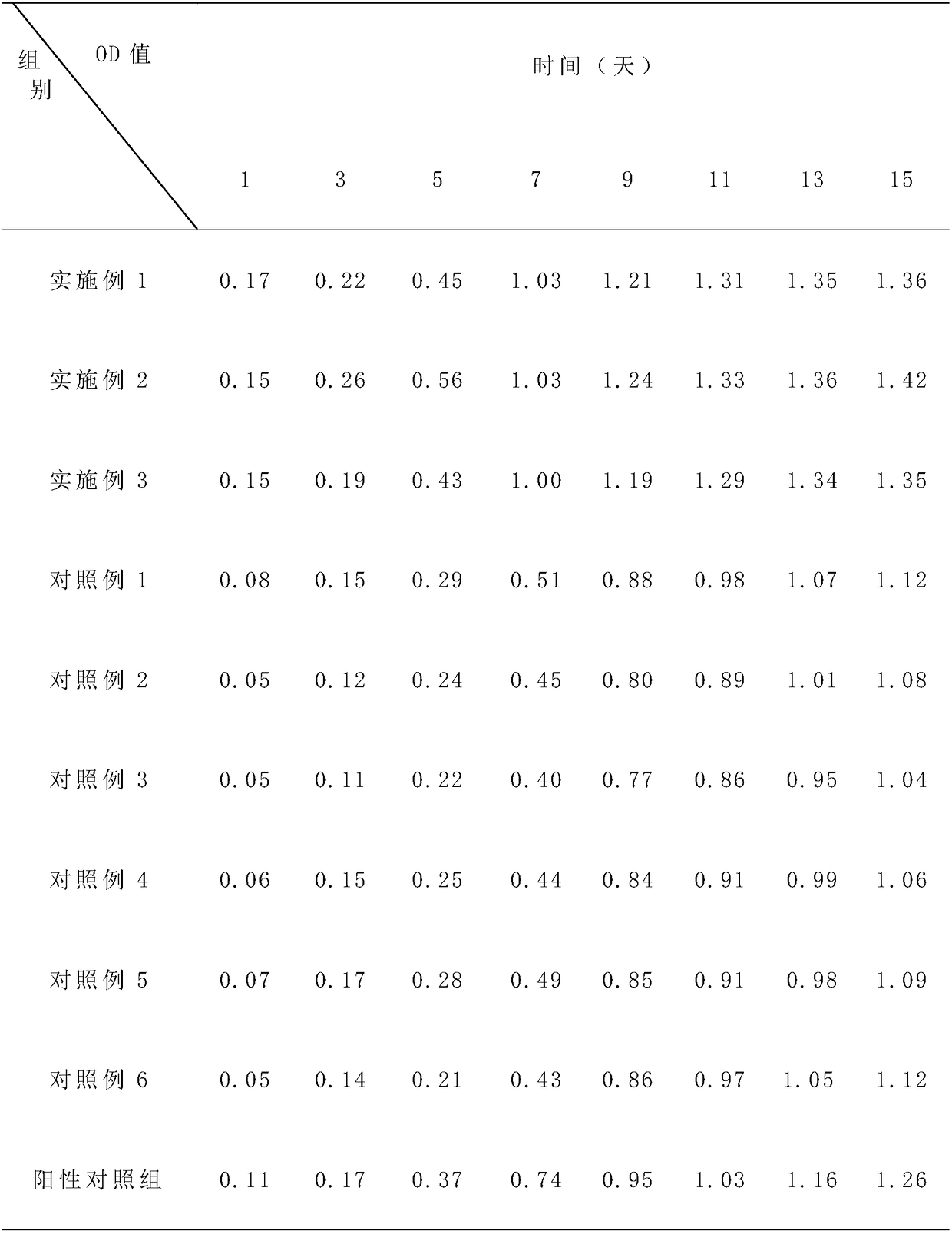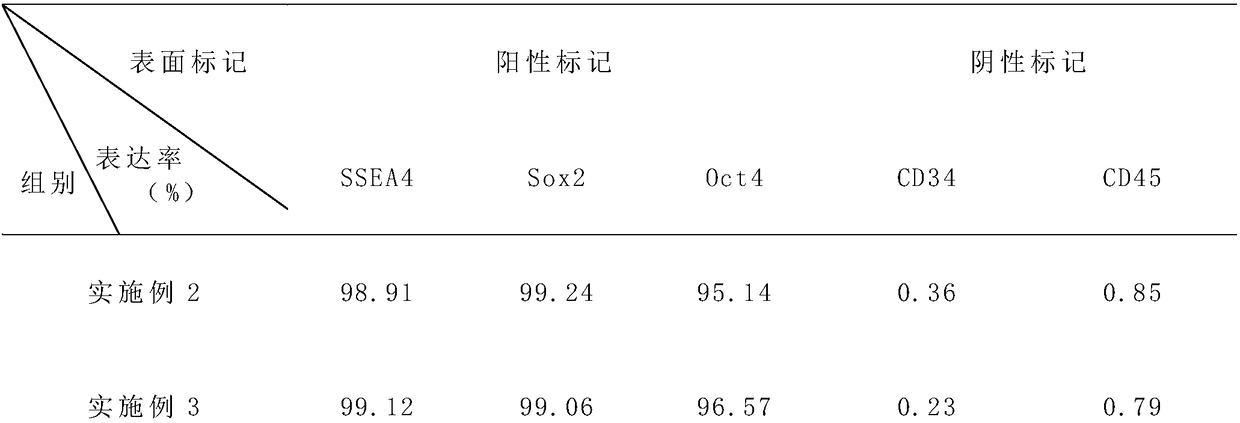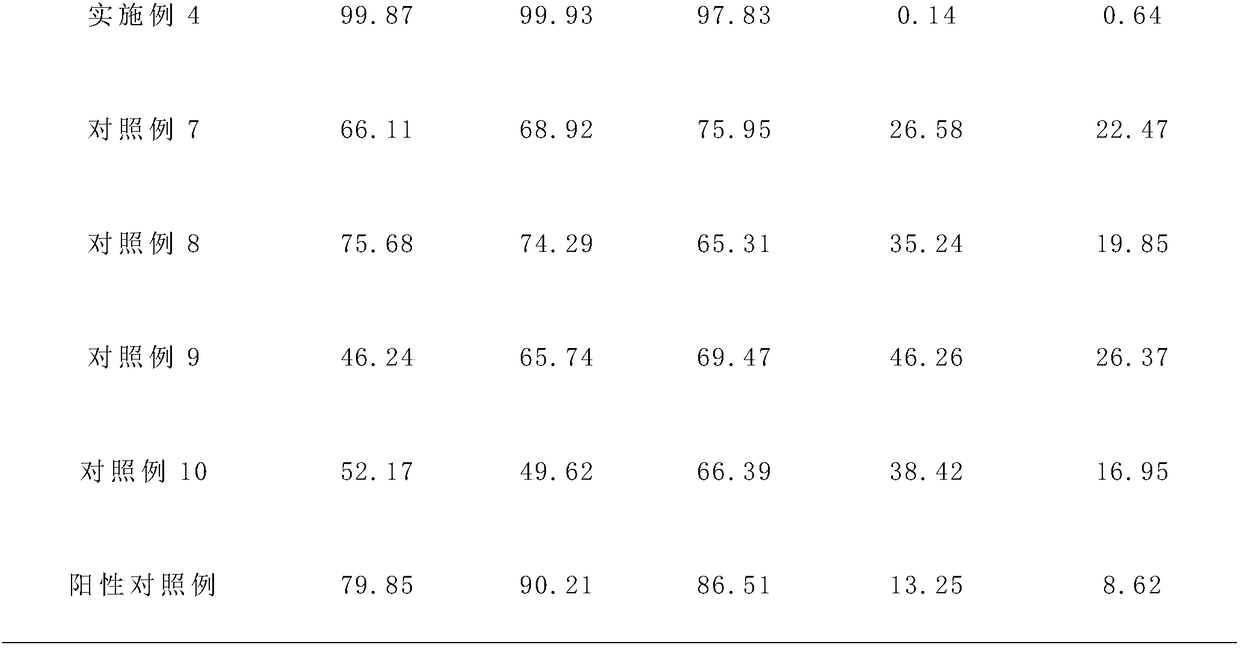Method for separating, amplifying, cryopreserving and reviving placenta sub-totipotent stem cell
A subpluripotent stem cell and stem cell technology, applied in cell dissociation methods, embryonic cells, animal cells, etc., can solve the problems of decreased cell viability, weak proliferation ability, and cells are susceptible to bacterial infection, and can improve the activity rate, improve quality, The effect of improving purity
- Summary
- Abstract
- Description
- Claims
- Application Information
AI Technical Summary
Problems solved by technology
Method used
Image
Examples
Embodiment 1
[0034] A method for isolating, expanding, freezing, and resuscitating stem cells from placental sub-pluripotent stem cells, which is characterized in that the method comprises the following steps:
[0035] 1) Collect samples: Take healthy placenta, remove amniotic membrane and congestion, sterilize the placenta with normal saline, reduce fetal chorionic villi in a glass dish, and cut to 0.5mm 3 Place the small pieces in the collection bottle, add 200IU / mL streptomycin sulfate to the collection bottle, and separate within 24h;
[0036] 2) Isolation of placental sub-pluripotent stem cells: perform cell separation on the sample collected in step 1) to obtain placental sub-pluripotent stem cells;
[0037] 3) Primary culture of placental sub-pluripotent stem cells: primary culture of the placental sub-pluripotent stem cells obtained in step 2) to obtain primary placental sub-pluripotent stem cells;
[0038] 4) Passage expansion and culture of placental sub-pluripotent stem cells: add the pr...
Embodiment 2
[0043] A method for isolating, expanding, freezing, and resuscitating stem cells from placental sub-pluripotent stem cells, which is characterized in that the method comprises the following steps:
[0044] 1) Collect samples: take a healthy placenta, remove amniotic membrane and congestion, disinfect the placenta with normal saline, reduce fetal chorionic villi in a glass dish, and cut to 0.5mm 3 Place the small pieces in the collection bottle, add 300IU / mL streptomycin sulfate to the collection bottle, and separate within 24h;
[0045] 2) Isolation of placental sub-pluripotent stem cells: perform cell separation on the sample collected in step 1) to obtain placental sub-pluripotent stem cells;
[0046] 3) Primary culture of placental sub-pluripotent stem cells: primary culture of the placental sub-pluripotent stem cells obtained in step 2) to obtain primary placental sub-pluripotent stem cells;
[0047] 4) Passage expansion culture of placental sub-pluripotent stem cells: add the prim...
Embodiment 3
[0055] A method for isolating, expanding, freezing, and resuscitating stem cells from placental subtotipotent stem cells, which is characterized in that the method comprises the following steps:
[0056] 1) Collect samples: take healthy placenta, remove amniotic membrane and congestion, disinfect the placenta with normal saline, reduce fetal chorionic membrane in a glass dish, and cut it to 0.5mm 3 Place the small pieces in the collection bottle, add 400IU / mL streptomycin sulfate to the collection bottle, and separate within 24h;
[0057] 2) Isolation of placental sub-pluripotent stem cells: the samples collected in step 1) are subjected to cell separation to obtain placental sub-pluripotent stem cells;
[0058] 3) Primary culture of placental sub-pluripotent stem cells: primary culture of the placental sub-pluripotent stem cells obtained in step 2) to obtain primary placental sub-pluripotent stem cells;
[0059] 4) Passage expansion and culture of placental sub-pluripotent stem cells:...
PUM
 Login to View More
Login to View More Abstract
Description
Claims
Application Information
 Login to View More
Login to View More - R&D
- Intellectual Property
- Life Sciences
- Materials
- Tech Scout
- Unparalleled Data Quality
- Higher Quality Content
- 60% Fewer Hallucinations
Browse by: Latest US Patents, China's latest patents, Technical Efficacy Thesaurus, Application Domain, Technology Topic, Popular Technical Reports.
© 2025 PatSnap. All rights reserved.Legal|Privacy policy|Modern Slavery Act Transparency Statement|Sitemap|About US| Contact US: help@patsnap.com



